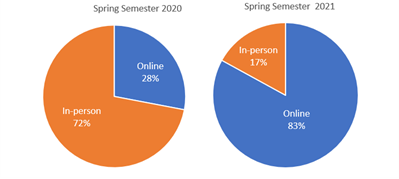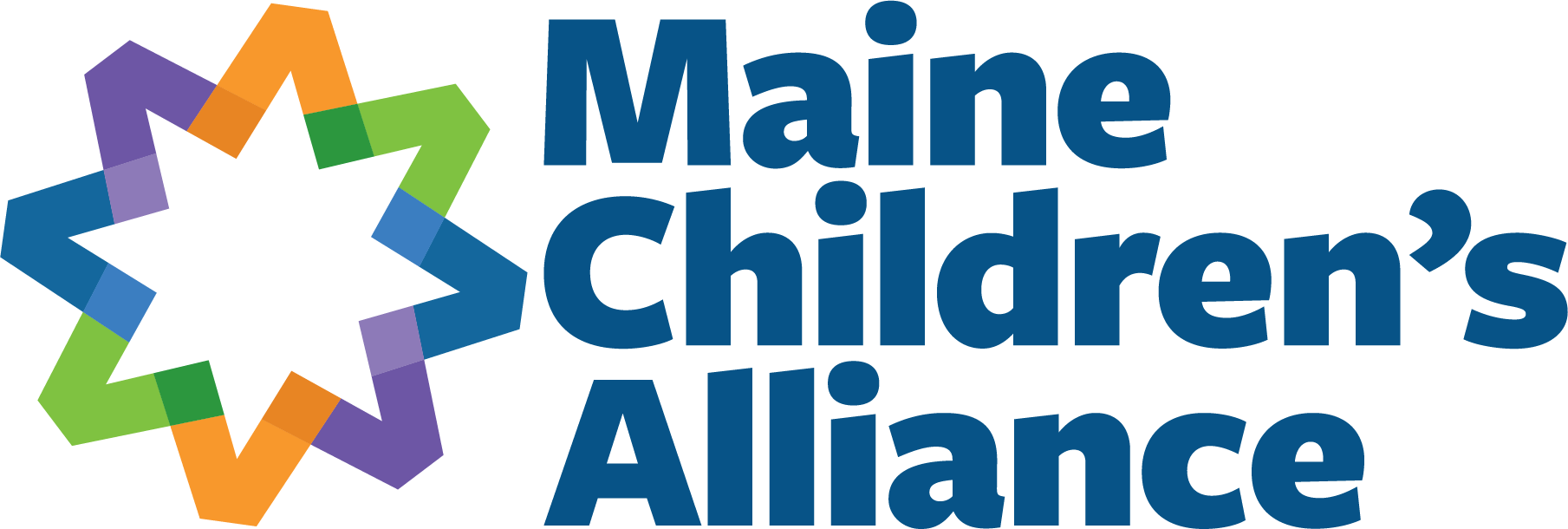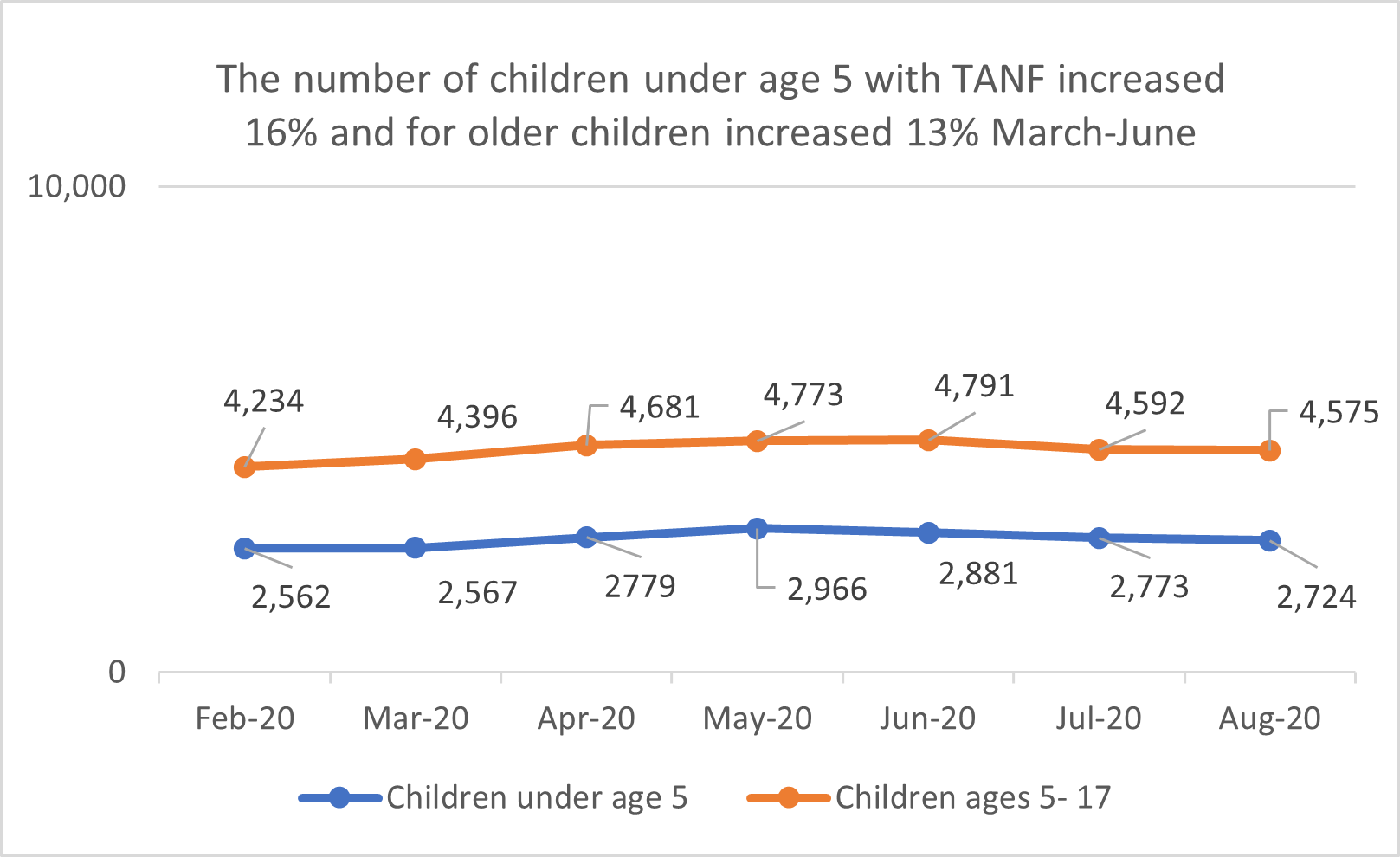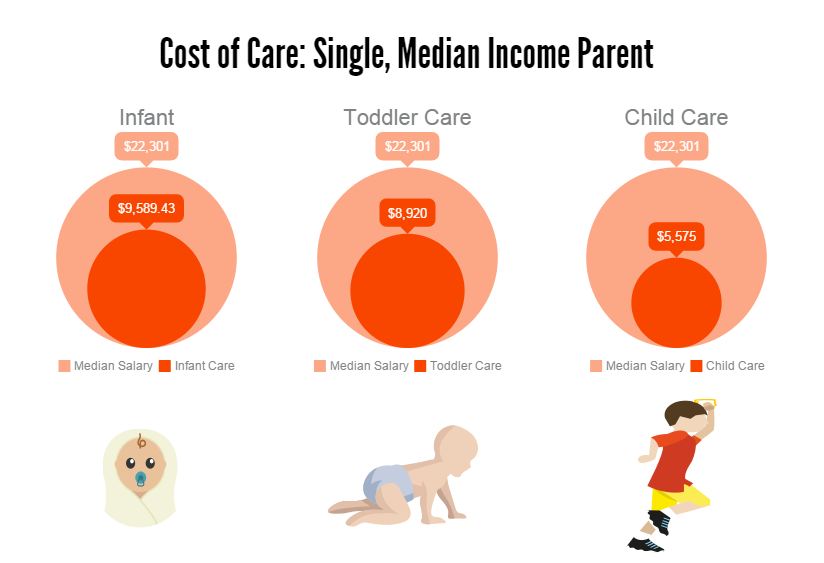Safety net programs in Maine provide critical support during the COVID-19 crisis and beyond
During times of crisis, public safety net programs provide critical resources to mitigate food and housing insecurity, health care coverage, and assistance to cover other basic needs . The onset of the economic crisis caused by COVID-19 created an immediate need for significant support to an unprecedent number of families experiencing sudden job loss or employment uncertainty. For many, this was the first time they were experiencing this level of hardship and need for support. Fortunately, federal waivers have made it possible for safety net programs to become more flexible and adapt to the needs of families navigating this crisis, making assistance more accessible to those in need.
Even as states have taken advantage of flexibilities to reach more families, without further state and federal action, these waivers will end when Maine’s state of emergency ends. Extended aid should be attached to measures of economic stability rather than set deadlines. Otherwise, families will suffer, and the economy will face a longer, slower recovery when we emerge from this crisis.
The essential needs of parents who have been out of work, many of whom have used up savings to get through, continue to experience hardship, even as we move toward economic recovery in our state. According to the most recent Household Pulse survey data , 36% of parents surveyed in Maine cited having difficulty paying for usual household expenses. The economic need of families is clear and ongoing.
One critical measure of economic security is the unemployment rate . In Maine, unemployment is up significantly as of this time last year, 6.9% vs 2.9% (August 2020). For many, the federal Unemployment Insurance weekly payments issued over the summer provided needed financial support during the crisis. But since Congress let those benefits expire without passing legislation to provide additional support, many are still experiencing loss of employment and income, now with fewer resources to support their basic needs. Additionally, the state’s unemployment figures are an undercount of the number of impacted people, since they only count those actively looking for work (this was temporarily waived during the height of the crisis). Approximately 18,000 people have left the workforce since March and are neither unemployed nor working. With many schools reopening in remote or hybrid scenarios, parents have faced difficult professional and financial decisions about whether to return to work or stay at home with their children; something that has particularly impacted women , and something that is surely reflected in the number of individuals who have left the workforce during this crisis.
Housing stability is another critical measure of family economic security. The most current data offers a bleak picture of how renters are faring during this crisis. Approximately 20% of surveyed Maine households cited experiencing a likelihood of eviction or foreclosure. For several months of the crisis, Maine Housing Authority offered a COVID-19 Rent Relief Program to help Maine families avoid getting behind on rent. On average, requests for aid were for 1-2 months. The rent relief program has paid rent for 2,140 households and another 1,848 are approved and pending. Unfortunately, this assistance program ended on September 30 th, even as many Mainers are still out of work, out of savings, and behind on rent. SNAP (Food Supplement Benefit) is a proven, effective tool in addressing food insecurity , allowing recipients to stretch their food dollars, so they don't have to choose between putting food on the table and meeting their other basic needs. Among the flexibilities employed by the state during the pandemic, SNAP participants have been able to receive the maximum monthly benefit. For families with children, having access to SNAP – particularly with schools closed or operating on atypical schedules that has reduced the consistency of access to school meals – ensures they are getting a steady, nutritious supply of food that is essential to their healthy growth and development. For children with SNAP, peak enrollment levels in Maine were in May of 2020.
For low-income families, the MaineCare state health insurance program provides access to affordable health care . This is especially important right now for those who may be newly eligible due to changes in employment and income. With 52% of children in Maine receiving health care coverage through a parent’s employer , job losses during the pandemic likely destabilized health insurance coverage for many Maine children. Yet, child enrollment in MaineCare has only increased 7% between February and August ( Office of MaineCare data, provided on request 9/30/20 ). It is critical that the state conducts outreach and ensures public awareness around available low-cost health care options, like CubCare (Maine’s CHIP program), MaineCare, or the Marketplace. Children having health insurance coverage is essential to ensuring they get the routine care they need to grow and develop in a healthy way.
The TANF (Temporary Assistance for Families) program provides important financial assistance for families with children who are temporarily unable to provide for themselves. During the pandemic, the 60-month lifetime limit implemented in 2012 and the family sanction have been waived. This was an important step to removing barriers to enrollment for those most in need of basic assistance right now. For families with children applying for TANF, the greatest number of new applicants was in April, while enrollment for families with children peaked in May.
The WIC (Women, Infants, and Children) program provides nutritious foods, information on healthy eating, and health care referrals to low-income women, infants, and children birth to age 5. During this crisis, WIC has been able to utilize flexibilities to safeguard the health of participants, such as allowing virtual rather than in-person visits. By the end of August, the program also shifted statewide from paper coupons to EBT cards (eWIC). This should reduce stigma for participants, as well as allowing them greater flexibility in spending. Like many of the safety net programs, WIC saw its greatest overall enrollment increase in April. That number steadily decreased from April to August, where the number stood at pre-pandemic levels ( State Office of WIC, provided on request 9/22/20 ).
While it is important to understand the numbers being served in these assistance programs, it is also important for us to consider the overall need , as represented by the total numbers of applicants for each program. For MaineCare, SNAP, and TANF, the significant peak application period occurred in weeks in April, with 1,988 applicants, 2,005 applicants, and 340 applicants, respectively.
So many of us are struggling during this crisis and these programs provide critical sources of support to help weather these challenging circumstances. Additional financial assistance from Congress, as well as the extension of program waivers, should be a top priority right now . With the economic crisis likely stretching into the foreseeable future, providing this access to ongoing assistance for essential needs like housing and food, will help mitigate the worst kinds of hardship too many families will otherwise face now and during the period of slow economic recovery.
The health and well-being of children and families in our state is at great risk right now. And when children and families are struggling, our communities and shared economy suffer. It is critical that the federal and state governments continue to make aid available to the children and families who are experiencing the greatest hardship right now. By investing in families now, we can stabilize and strengthen the parents and children who represent our current and future workforce and give them the best opportunities to emerge from this crisis prepared to thrive and succeed.








